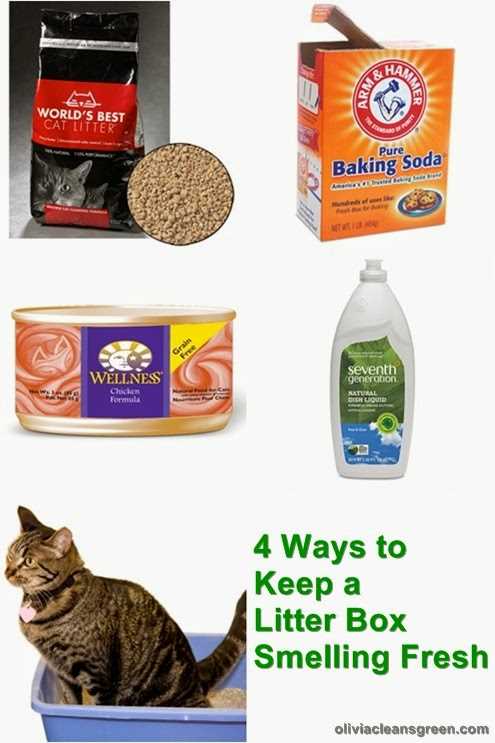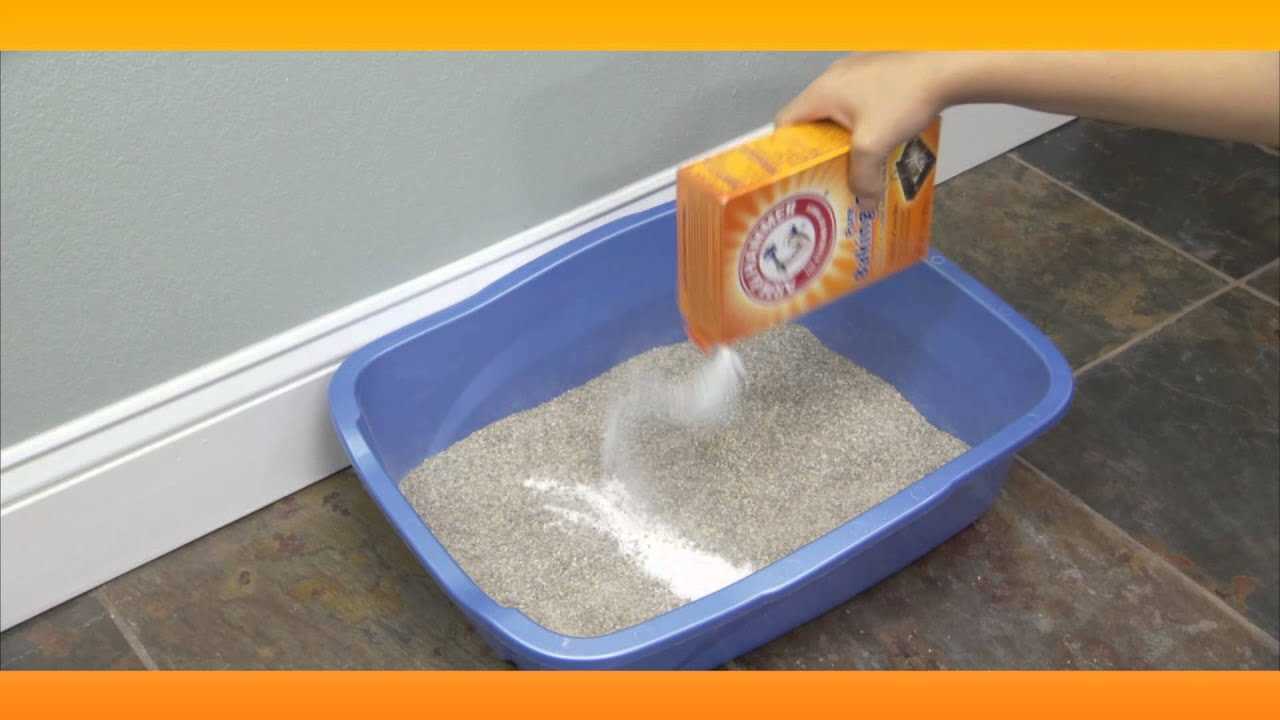

Switching to a high-quality, clumping material has made a significant difference in my living space. The clumps form easily, making cleanup a breeze and helping to control odors effectively.
Regularly scooping is non-negotiable. I recommend doing this at least once a day to prevent any unpleasant smells from lingering. It’s a small effort that goes a long way in maintaining a fresh environment.
Using a covered container can help contain odors while providing a sense of privacy. Just ensure that there’s enough ventilation to avoid stuffiness. Cats appreciate a little seclusion, and it can help keep the air fresher.
Consider adding baking soda to the litter. This natural deodorizer works wonders in absorbing unwanted scents. Just sprinkle a bit on top of the litter when you refresh it.
Finally, a thorough cleaning of the entire setup should be done weekly. Empty the contents, wash the container with mild soap, and dry it completely before adding fresh litter. This routine ensures that any residual odors are eliminated and keeps everything smelling pleasant.
Tips for a Fresh Litter Area
Access to quality materials is key. Use clumping litter; it simplifies cleanup and reduces odors significantly. Look for brands that advertise odor control features. Natural options can be effective too, such as pine or corn-based litters.
Regular Maintenance Schedule
Consistency in cleaning is critical. Scoop daily to remove waste promptly. A thorough wash of the litter container with mild soap and water should happen weekly. This practice helps eliminate lingering smells that can build up over time.
Proper Placement
Location matters. Choose a spot that offers good ventilation. Avoid placing the container in cramped or enclosed areas where odors can accumulate. If possible, use an air purifier nearby to help circulate fresh air.
Choose the Right Litter
I prefer clumping litter made from natural materials like clay or corn. It makes cleaning easy, as it forms solid clumps that can be scooped out. This reduces odors significantly.
Consider crystal litter as well; it absorbs moisture and controls bad smells efficiently. It doesn’t clump, but it dries out waste quickly, making it less offensive.
For those who enjoy a more eco-friendly approach, try biodegradable options like recycled paper or wood pellets. They’re less harsh on the environment and can help minimize unpleasant scents.
Fragranced litters are tempting, but they can be overwhelming. I prefer unscented varieties, which control odors naturally without adding strong fragrances that might irritate my sensitive nose.
Experiment to find the best fit for your preferences. Each cat has unique needs, and the right choice can make a big difference in maintaining a fresh environment.
Clean the Litter Area Regularly

Daily scooping is a must. I suggest you remove waste at least once a day. This simple act prevents odors from accumulating and keeps the environment fresh. Don’t forget to replace the litter entirely every couple of weeks. Use a mild soap and warm water to clean the container during this process. Rinse thoroughly to avoid any residue that might cling and create unpleasant scents.
Frequency Matters
Consistency is key. By sticking to a cleaning schedule, you’ll notice a significant reduction in unpleasant smells. If you have multiple felines, consider increasing the frequency of your maintenance routine. Each furry friend adds to the mess, so it’s wise to adjust accordingly.
Quality Litter and Accessories

Investing in high-quality litter can enhance odor control. Some options are specifically designed to neutralize smells. Additionally, using an enclosed litter container can help contain odors, but ensure it is cleaned often to prevent any buildup. For those extra playful moments, consider adding interactive cat toys for indoor cats to keep me entertained, reducing my time spent in the litter area!
Use Liner for Easy Cleaning
Using a liner simplifies the tidying process significantly. It acts as a protective layer, preventing waste from sticking to the sides and bottom of the container, making removal quick and hassle-free.
When selecting a liner, choose one that is durable and waterproof. It should fit snugly, covering all surfaces. Some materials are specifically designed to minimize odors, offering an extra level of freshness.
| Type of Liner | Benefits |
|---|---|
| Plastic | Waterproof, easy to clean, affordable. |
| Washable Fabric | Reusable, eco-friendly, soft on paws. |
| Disposable | Convenient, eliminates the need for washing, often infused with odor control. |
Regularly changing the liner will help maintain freshness and reduce odors. It’s a simple step that makes a noticeable difference in cleanliness and comfort.
Implement Odor-Absorbing Products
Activated charcoal is a superstar in the odor-fighting game. Placing a small bowl of activated charcoal near my litter area works wonders to neutralize unpleasant scents. It’s a simple yet effective addition to my grooming routine.
Baking soda is another secret weapon. Sprinkling a thin layer of it in my litter before adding fresh material can significantly reduce odors. Make sure to mix it well to distribute evenly.
Commercial Odor Neutralizers
There are specialized products designed for pet areas that can help manage unwanted smells. Look for those that are safe for furry friends, as some chemicals can be harmful. Always follow instructions for best results.
Essential Oils and Natural Solutions
- Consider using pet-safe essential oils, like lavender or chamomile, which can add a pleasant aroma while masking odors.
- Another natural option is vinegar. A diluted solution can be sprayed around the area to help freshen things up.
Integrating these odor-absorbing solutions into my environment keeps my space fresh, making it more enjoyable for everyone. I recommend regular monitoring and adjusting based on how things smell around my domain.
Place the Litter Box in a Ventilated Area
Choose a spot with good air circulation for the litter area. This helps disperse odors more efficiently.
- Avoid small, enclosed spaces; they trap smells.
- Consider placing the litter area near a window or a fan for better airflow.
- Ensure the location is away from high-traffic zones to minimize stress and disturbances.
- Check for drafts; while some airflow is beneficial, strong drafts can be uncomfortable.
Regularly assess the ventilation effectiveness. If odors linger despite cleaning, reevaluate the placement.
Monitor Your Feline’s Health
Regular observations are key. Pay attention to changes in litter habits, such as frequency and consistency. If I notice anything unusual, like straining or blood, it’s a flag for a vet visit. Keeping a close eye helps catch potential health issues early.
Diet Impacts Odor

Nutrition plays a significant role in waste smell. A balanced diet leads to healthier elimination. Discuss with a vet about optimal food choices. If my meals are rich in quality ingredients, it reflects positively in my litter habits.
Hydration Matters
Water intake affects bowel health. Encourage drinking by providing fresh water daily. If I seem dehydrated, it can lead to concentrated urine, which can intensify odors. A water fountain might entice me to hydrate more.
For more tips on cooking healthy snacks, check out how to cook pumpkin seeds on skillet.
Consider Alternative Litter Box Designs
Opt for enclosed litter trays or self-cleaning models. These designs help contain odors more effectively than traditional open boxes. Enclosed options have a lid that traps smells inside, while self-cleaning varieties automatically scoop waste, reducing contact time with litter and waste.
Evaluate the size and shape too. A larger litter receptacle allows for better air circulation and space for movement. Some prefer corner designs that fit snugly in tight spaces, maximizing room while still providing ample area for usage.
Look into odor-control features like carbon filters or integrated air fresheners. These additions actively combat unpleasant scents, enhancing the overall experience for both me and my human. Consider trying different configurations to see what best suits your preferences and lifestyle.
Don’t forget about the height of the entrance. Some of us appreciate lower entries, especially as we age or if mobility becomes an issue. Test various designs to find what feels most comfortable and accessible.







